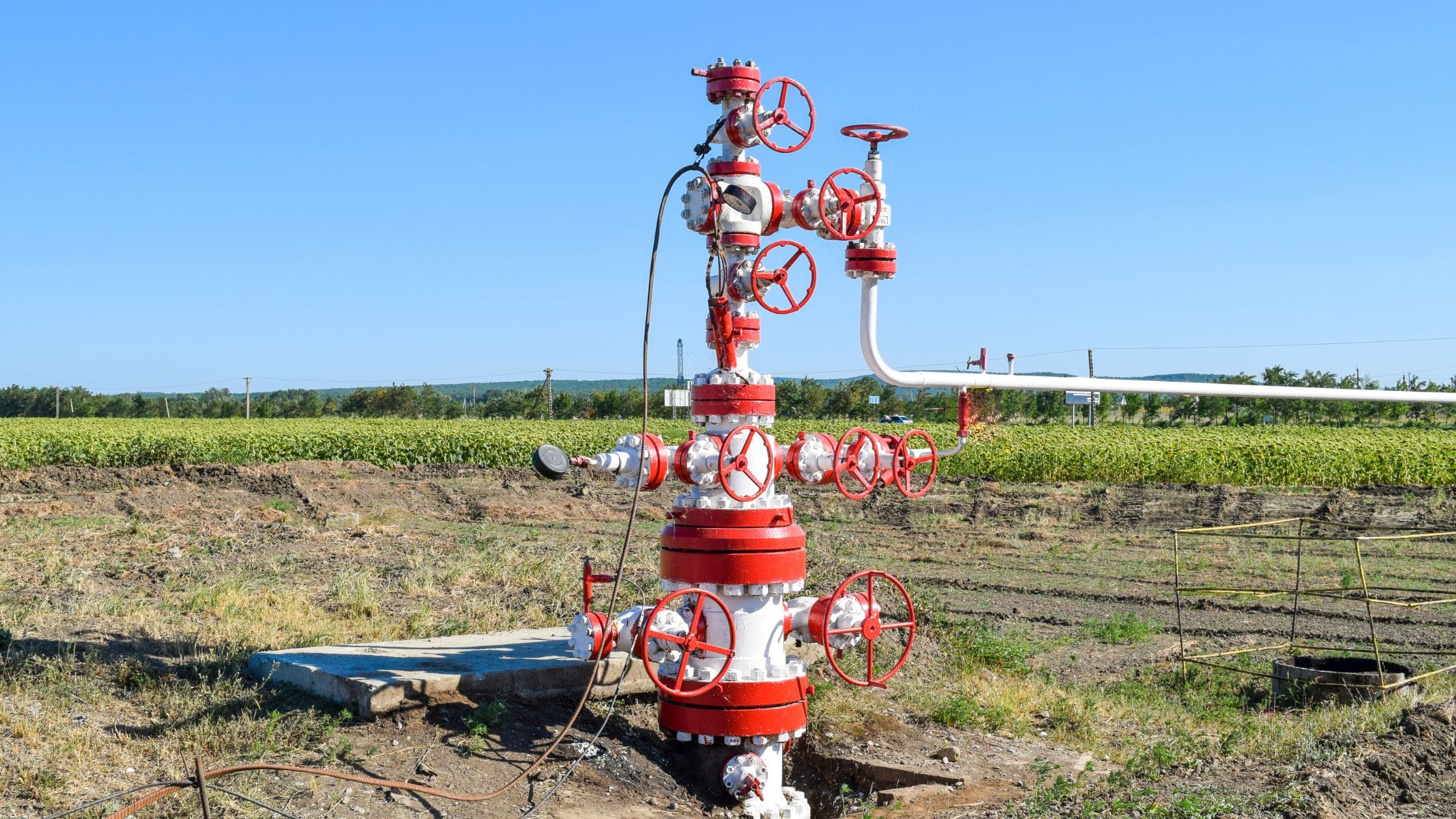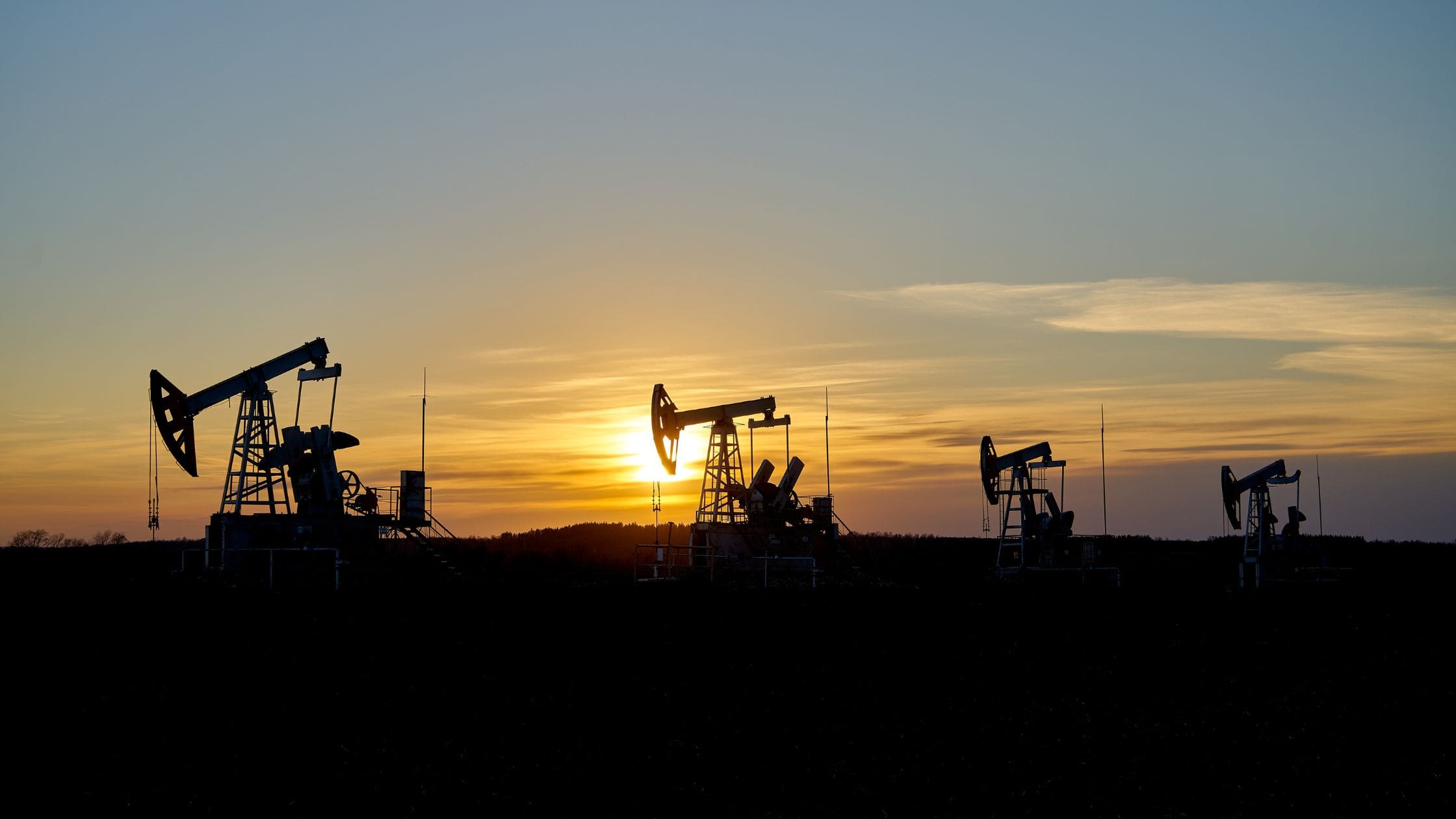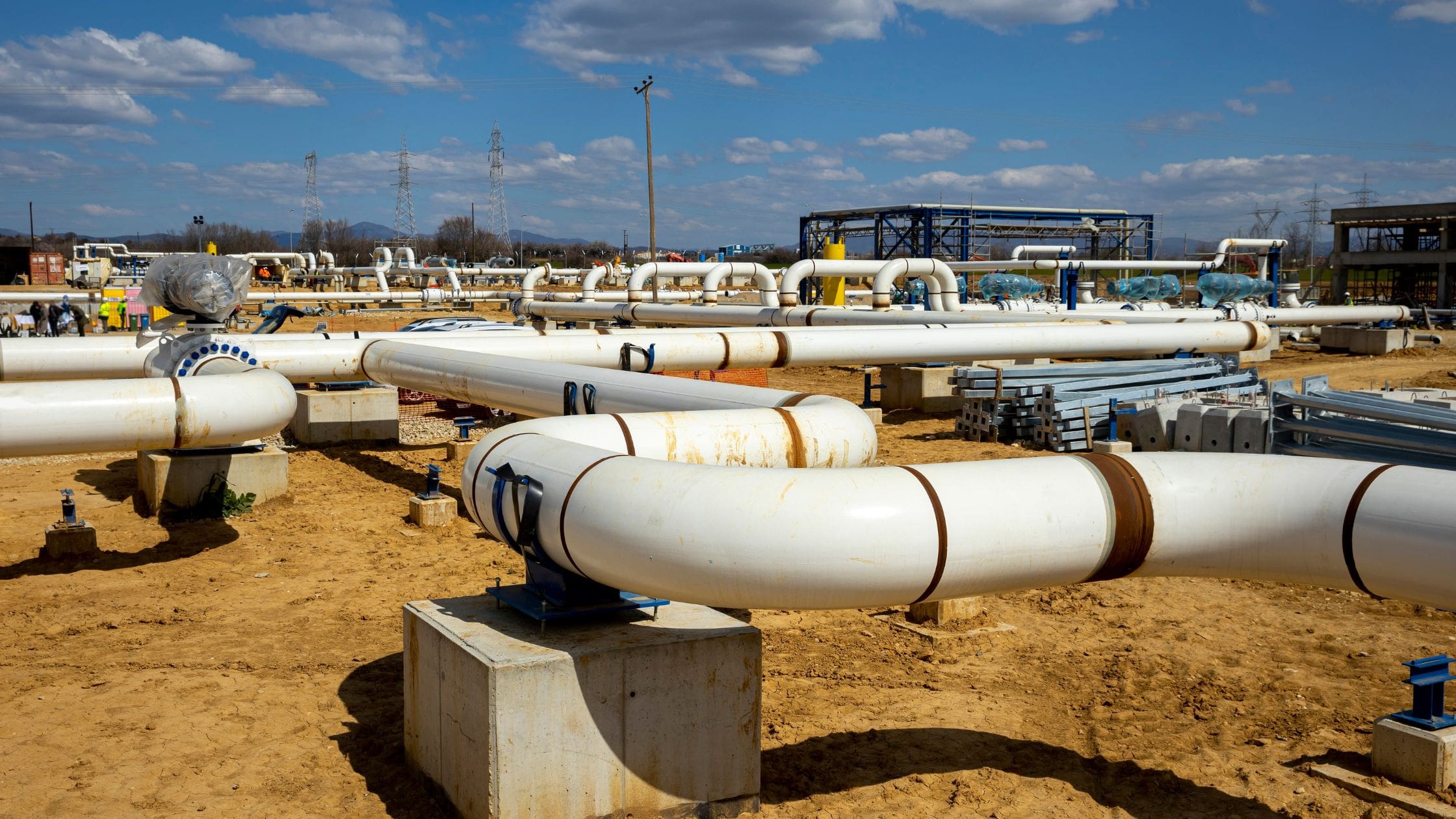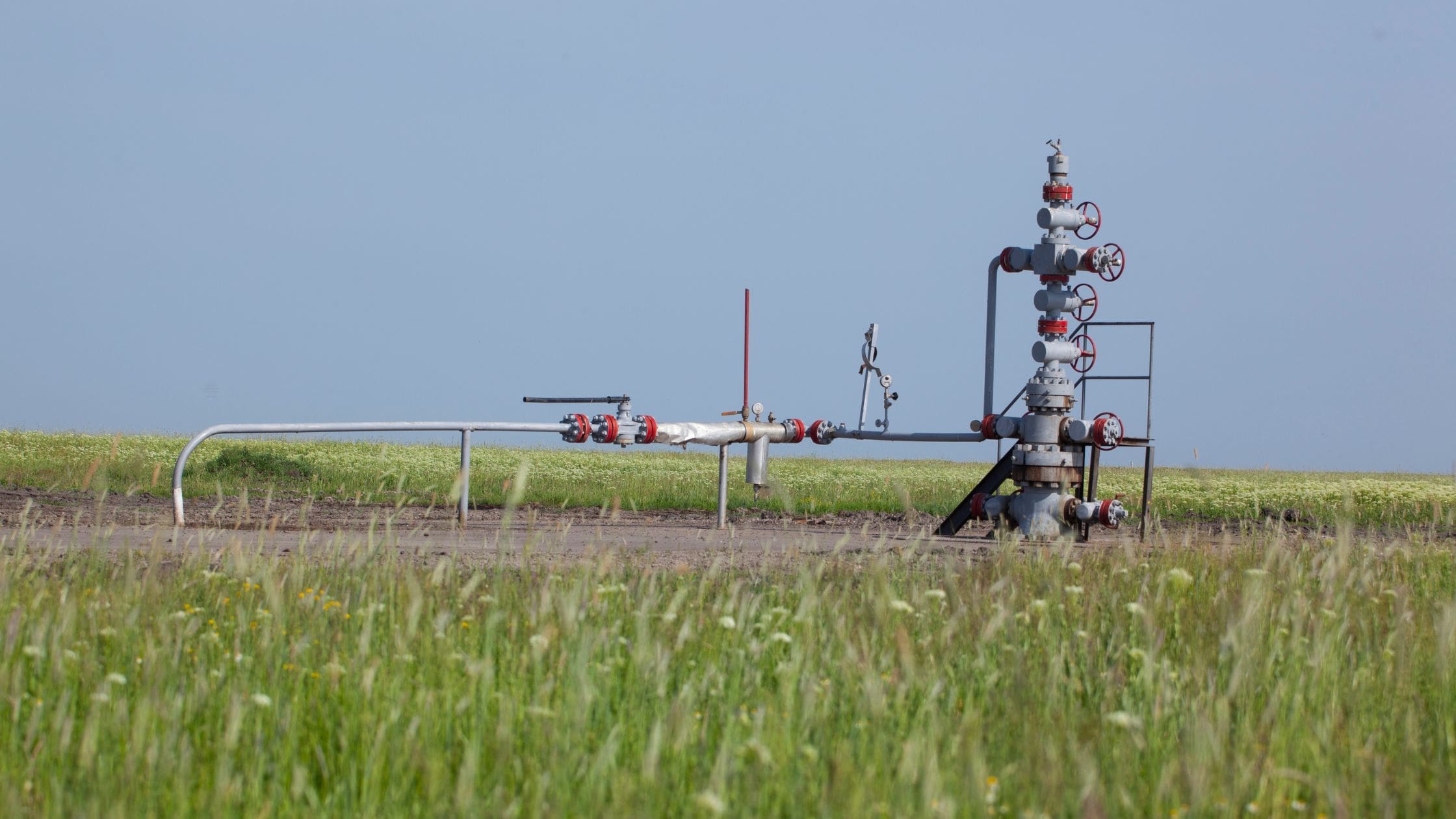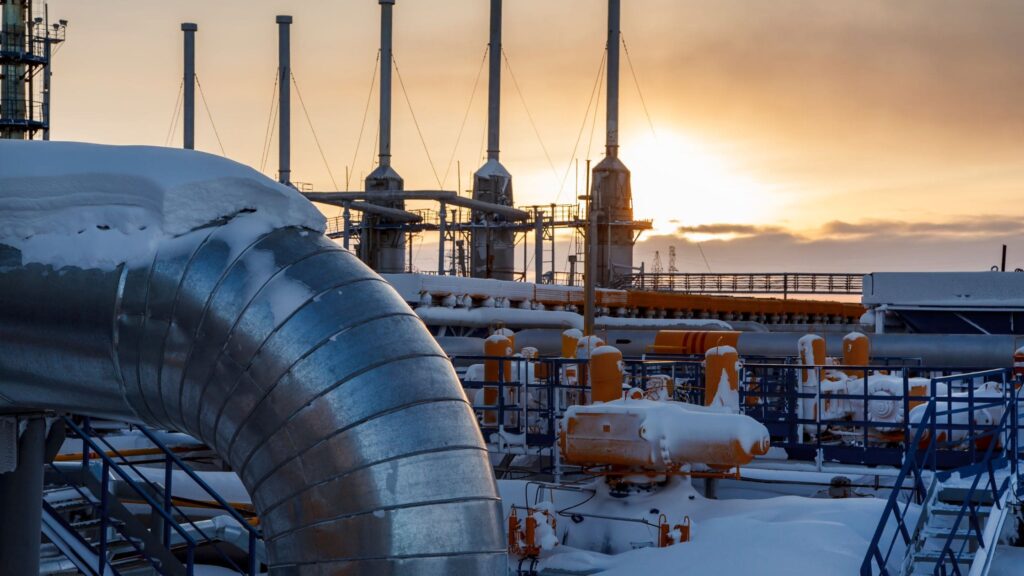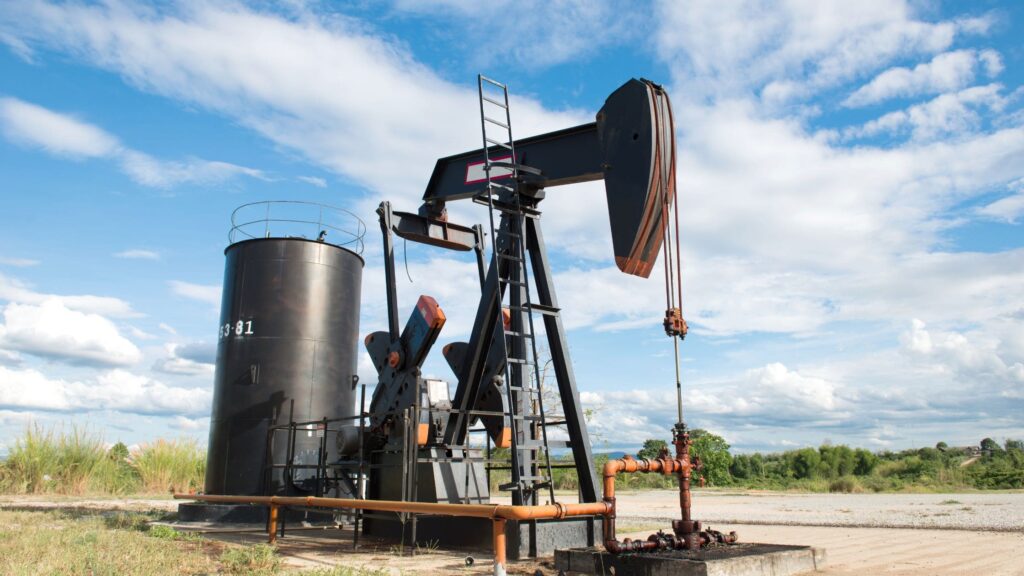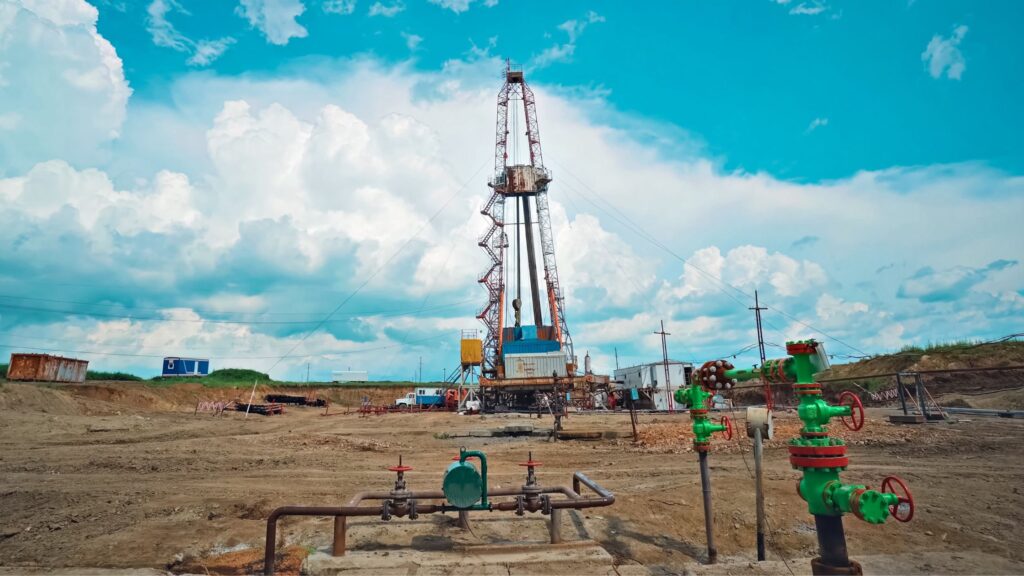In this article, we’ll focus on the significant impact these fields have on both local and national scales, and how they continue to shape the energy landscape of not just the United States, but the world.
What are Oil and Gas Fields?
Oil and gas fields are regions where natural accumulations of petroleum and natural gas are found. These fields are typically located in sedimentary basins that have trapped hydrocarbons over millions of years. These hydrocarbons are formed from the decayed remains of marine organisms that, under intense heat and pressure, transform into oil and gas. The first successful oil well in the U.S. was drilled in Pennsylvania in 1859, marking the start of domestic oil exploration. Over the years, advancements in technologies like horizontal drilling and hydraulic fracturing have revolutionized the industry, making it possible to access reserves in tight formations previously deemed inaccessible, significantly boosting the U.S.’s production capabilities.
What are the Largest Oil and Gas Fields in the United States?
The United States is home to some of the world’s largest oil and gas fields, significantly contributing to its status as a leading energy producer. Notably, the Permian Basin, sprawling across Texas and New Mexico, is renowned for its substantial output, exceeding 6 million barrels of oil per day. Fields like Prudhoe Bay in Alaska, established in the late 1960s, and newer developments like the Eagle Ford Shale in Texas underscore the dynamic nature of U.S. energy resources. These fields have not only bolstered U.S. oil and gas production but have also been pivotal in advancing technologies such as hydraulic fracturing, which have unlocked previously inaccessible reserves and boosted the overall hydrocarbon output from both oil and associated natural gas fields like Bakken and Eagle Ford.
What are the largest Oil Fields in the United States
The U.S. boasts several giant oil fields that have made significant impacts on its oil production capabilities. Key players include:
- Permian Basin (Texas and New Mexico): Known for its complex geological structure with multiple overlapping formations, this basin remains a heavyweight in U.S. oil production, with current outputs suggesting a daily production well over 6 million barrels.
- Eagle Ford Shale (Texas): This field has rapidly become a critical player in the oil industry, particularly in the last 15 years, thanks to advancements in drilling technologies.
- Bakken Formation (North Dakota and Montana): A major source of oil production, contributing significantly to North Dakota’s rise as a top oil-producing state.
- Prudhoe Bay Oil Field (Alaska): One of the oldest and largest fields, although its production has declined from its peak years.
- Spraberry Trend (Texas): Continues to be a significant contributor within the Permian Basin, leveraging modern extraction techniques to sustain its output.
Permian Basin – Texas and New Mexico
The Permian Basin stands out as one of the most prolific oil-producing regions in the United States, if not the world. Spanning approximately 86,000 square miles, it holds estimated recoverable reserves of around 46 billion barrels of oil equivalent (BOE). Recent figures suggest that daily oil production can exceed 6 million barrels, highlighting the basin’s critical role in energy supply. This region encompasses several important sub-areas like the Wolfcamp, Bone Spring, and Spraberry formations, each contributing significantly to the basin’s high output. The combination of extensive resources and advanced extraction technology, such as hydraulic fracturing and horizontal drilling, continues to drive the Permian Basin’s leadership in U.S. oil production.
Eagle Ford Shale – Texas
The Eagle Ford Shale in Texas is a prominent oil field known for its substantial recoverable reserves estimated at approximately 10 billion barrels of oil equivalent. Since its rise to prominence during the late 2000s shale boom, it has been a significant contributor to U.S. oil output. At its peak, production from the Eagle Ford exceeded 1.7 million barrels of oil per day, with recent figures around 1.1 million barrels per day as of April 2023. This field exemplifies the successful application of hydraulic fracturing and horizontal drilling techniques that have revolutionized the oil industry in Texas and beyond.
Bakken Formation – North Dakota and Montana
Located in North Dakota and Montana, the Bakken Formation is another giant in the U.S. oil landscape, with estimated recoverable reserves of around 7.4 billion barrels of oil. Production from the Bakken reached its zenith at approximately 1.4 million barrels per day, with current production stable at about 1 million barrels per day in 2023. This field has been a major driver behind North Dakota’s ascent to becoming one of the top three oil-producing states in the country, significantly impacting local economic growth and employment.
Prudhoe Bay Oil Field – Alaska
The Prudhoe Bay Oil Field in Alaska stands as the largest conventional oil field discovered in North America. It boasts around 25 billion barrels of recoverable oil reserves. During the 1980s, the field’s output reached a peak production of about 1.5 million barrels per day. However, as of 2023, production has notably declined to an average of approximately 27,000 barrels per day, reflecting the natural maturation and decline of the field’s production capacity over time. Despite this decline, Prudhoe Bay remains a cornerstone of Alaskan oil production and a critical asset in the U.S. energy sector.
Spraberry Trend – Texas
The Spraberry Trend, located in the heart of the Permian Basin in Texas, holds estimated recoverable reserves of approximately 10 billion barrels. First discovered in the 1940s, this field has been a cornerstone of American oil production for decades. Historical data from 2013 showed production figures around 99 million barrels, and the field has continued to produce under advanced fracturing techniques. The Spraberry Trend is emblematic of the longevity and resilience of oil fields in the U.S., continually adapting to technological advancements to maintain its significant output.
Wattenberg Field – Colorado
Spanning about 2,400 square miles within the Denver-Julesburg Basin, the Wattenberg Field is another major player in the U.S. oil landscape. As of early 2023, it produced approximately 216,000 barrels per day. This field is renowned for its liquids-rich shale formations and has benefitted extensively from extensive horizontal drilling, enhancing its production capabilities and reinforcing its role in bolstering local and national energy supplies.
Austin Chalk – Texas and Louisiana
The Austin Chalk spans across Texas and Louisiana, with recoverable reserves estimated at about 3 billion barrels of oil equivalent. It reached a peak production capacity of approximately 200,000 barrels per day. Known for its production of both oil and natural gas, the Austin Chalk has been a significant contributor to the energy sector for several decades. Its longevity and productivity reflect the dynamic nature of oil and gas exploration and extraction in the region, showcasing the continuous evolution of the industry.
Kuparuk River Oil Field – Alaska
The Kuparuk River Oil Field, located near Prudhoe Bay on Alaska’s North Slope, is one of the largest oil fields in the United States. Since it began production in 1981, the field has been a significant contributor to the oil output of the region. As of 2023, the Kuparuk River Oil Field produces approximately 71,000 barrels of oil per day. This enduring production underscores the field’s robust infrastructure and the efficacy of ongoing extraction technologies that continue to tap its substantial reserves.
Midway-Sunset Oil Field – California
California’s Midway-Sunset Oil Field stands as one of the oldest producing fields in the state, situated in the prolific San Joaquin Valley. This field continues to be a cornerstone of California’s oil industry, with a production output of about 69,790 barrels per day as of 2023. The heavy oil extracted here necessitates enhanced recovery methods, including steam injection, which has proven effective in maintaining production levels despite the field’s mature status.
Green Canyon Oil Field – Federal Gulf of Mexico
Located in the deepwater regions of the Gulf of Mexico, the Green Canyon Oil Field is a vital asset in the U.S. offshore oil infrastructure. This field is composed of multiple projects that tap into the deepwater reserves, contributing significantly to the overall offshore production in the United States. Despite being somewhat overshadowed by onshore shale developments, the Green Canyon continues to play a crucial role in meeting the country’s energy demands through its substantial output in a challenging extraction environment.
Briscoe Ranch Oil Field – Texas
The Briscoe Ranch Oil Field in Texas is a key component of the robust Texan oil infrastructure, which plays a crucial role in supporting both local and national energy needs. Producing approximately 62 million barrels per year, according to recent estimates, this field exemplifies the significant impact of Texas in the broader U.S. oil industry. Its production capacity contributes substantially to the state’s and the nation’s oil output, underscoring the critical role of Texas in the energy sector.
Mississippi Canyon Oil Field – Federal Gulf of Mexico
Situated in the deep waters of the Gulf of Mexico, the Mississippi Canyon Oil Field is an undersea formation that produces around 15 million barrels of oil per year. It is equipped with various offshore drilling platforms that operate in challenging deep-water environments. This field is a significant contributor to the offshore U.S. production, highlighting the importance of Gulf operations in the United States’ energy strategy.
Wasson Oil Field – Texas
Covering approximately 62,500 acres, the Wasson Oil Field in Texas is a historic and pivotal asset in the U.S. oil landscape. With an annual production of around 19 million barrels, this field has been a cornerstone in the development of the oil industry in Texas. The development of the Wasson Oil Field accelerated significantly post-Great Depression, playing a vital role in the economic recovery and growth of the region.
Atlantis Oil Field – Federal Gulf of Mexico
The Atlantis Oil Field, situated roughly 150 miles south of New Orleans in about 7,000 feet of water, exemplifies the vast capabilities of deepwater oil extraction in the Gulf of Mexico. As of 2023, this field has a gross production capacity of approximately 140,000 barrels per day. The Atlantis is a vital part of the ongoing deepwater expansion, demonstrating the technological advancements and significant investments that characterize offshore oil production in the United States.
Shenzi Oil Field – Federal Gulf of Mexico
Recent developments in 2023 have boosted the Shenzi Oil Field’s capacity to approximately 100,000 barrels of oil per day, along with around 50 million cubic feet of natural gas per day. Located in the Gulf of Mexico, Shenzi highlights the continuous offshore investment and the strategic importance of deepwater fields in the national energy portfolio, ensuring substantial contributions to the overall energy production capabilities of the region.
Niobrara Shale – Colorado and Wyoming
The Niobrara Shale, intersecting with parts of the Wattenberg field in Colorado, is renowned for its significant oil potential with estimated recoverable reserves of around 2 billion barrels of oil equivalent. At its peak, production notably exceeded 600,000 barrels per day. This region exemplifies the successful integration of advanced drilling technologies that unlock the vast resources of oil shale and tight sands, sustaining the energy demands of both states and the broader United States.
Uinta Basin – Utah and Colorado
In the Uinta Basin, which spans across Utah and Colorado, estimated reserves stand at about 1.5 billion barrels of oil equivalent. The basin consistently produces over 60,000 barrels per day, showcasing its role in the broader context of American energy production. Known for its challenging oil shale and tight sands formations, the Uinta Basin requires sophisticated drilling techniques to effectively extract its valuable resources, reflecting the dynamic and evolving nature of the U.S. oil industry.
What are the Largest Natural Gas Fields in the United States?
The evolution of natural gas production in the United States has seen a significant surge, primarily due to the advancement of fracking and development of shale formations. Notable among these are the Marcellus, Haynesville, and Barnett formations, which collectively contribute a substantial portion of the nation’s natural gas output. These fields have not only enhanced energy security but also transformed energy production dynamics across the U.S.
Marcellus Shale – Pennsylvania and West Virginia
The Marcellus Shale stands as the largest natural gas field in the United States, with a staggering production rate of approximately 2,836 billion cubic feet per day as of 2023. Spanning significant parts of Pennsylvania and West Virginia, this field is a cornerstone in the U.S. energy infrastructure. It also harbors substantial quantities of natural gas liquids, which add further economic value. The development of Marcellus has been pivotal in establishing the Northeastern United States as a crucial energy-producing region, supporting both local economies and the broader national energy market.
Newark East Field – Texas
Located in the heart of Texas, the Newark East Field taps into the prolific Barnett Shale. Discovered in 1981, this field has played a pivotal role in the U.S. natural gas sector. As of 2023, it generates approximately 1,951 billion cubic feet of gas per day. Once holding the title of the world’s largest gas-producing field, it has been essential in shaping the energy landscape of both Texas and the broader United States.
B-43 Area – Arkansas
The B-43 Area in Arkansas, revitalized by horizontal drilling techniques, illustrates the transformative impact of the shale boom on local and national gas production. In 2023, this area produced about 1,025 billion cubic feet of gas per day, showcasing a remarkable resurgence in Arkansas’s natural gas sector, which had been dormant for years before these technological advancements.
San Juan Basin – Colorado and New Mexico
The San Juan Basin, spanning Colorado and New Mexico, is renowned for its significant gas output, totaling 42.6 trillion cubic feet cumulatively by 2009. In May 2023 alone, a single well reported production of approximately 1,024 billion cubic feet per day. The basin holds potential for future growth, contingent on rising gas prices, which could further enhance its output and economic viability.
Haynesville Shale – Louisiana and Texas
The Haynesville Shale has seen a record production of approximately 925 billion cubic feet per day in 2023, marking a 10% increase from the previous year. This field is renowned for its high initial well production rates, which significantly contribute to the robust infrastructure supporting local and national energy requirements.
Pinedale Field – Wyoming
Located in the Green River Basin, the Pinedale Field in Wyoming is one of the most productive gas regions in the Rocky Mountains, with an output of about 653 billion cubic feet per day in 2023. This field exemplifies the significant natural gas resources the state has to offer and underscores the ongoing importance of the region in the U.S. energy sector.
Jonah Field – Wyoming
Wyoming’s Jonah Field, situated in the Greater Green River Basin, is another cornerstone of U.S. natural gas production. Producing around 304 billion cubic feet per day in 2023, the field is noted for its complex sandstone channels that require sophisticated drilling strategies to effectively tap its substantial reserves.
Wattenberg Field – Colorado
In Colorado, the Wattenberg Field has demonstrated remarkable production levels, with natural gas output reaching approximately 239 billion cubic feet per day in 2023. The field benefits significantly from overlaps with Niobrara formations, which also produce oil, highlighting the dual hydrocarbon potential. Advances in horizontal drilling have been crucial in boosting production, ensuring the field continues to play a key role in meeting the country’s energy demands.
Carthage Field – Texas
In East Texas, the Carthage Field stands out as a significant player, producing approximately 568 billion cubic feet per day as of 2023. This field is a cornerstone of the robust Texan gas infrastructure, extracting large volumes from tight sands and deep formations. Its strategic development supports both local and national energy requirements, emphasizing its critical role in the broader natural gas industry.
Prudhoe Bay Gas Field – Alaska
Alaska’s Prudhoe Bay Gas Field, with in situ gas reserves estimated at 46 trillion cubic feet and a recoverable portion of about 26 trillion cubic feet, remains a giant in North America. In 2023, it produced around 147 billion cubic feet per day. This field not only exemplifies Alaska’s contributions to U.S. energy strategies but also highlights the significant potential of conventional gas fields amidst the rising prominence of shale gas.
What are the Challenges Facing the Largest U.S. Oil and Gas Fields?
The U.S. oil and gas sectors are currently navigating through challenges that could redefine production metrics and operational strategies. These challenges stem from regulatory, environmental, and competitive pressures, as well as the intrinsic decline of existing fields.
Regulatory and Policy Changes
Navigating the regulatory and policy landscape is a significant challenge for oil and gas operations, particularly for offshore fields in the Gulf of Mexico. These fields are subject to stringent environmental and safety regulations, which can impede rapid development. Onshore, both federal and state-level tax and permitting policies greatly influence drilling rates. This regulatory environment affects the profitability and operational strategies of the fields. Additionally, the approval processes for pipelines, crucial for the transport of shale oil and gas across state lines, directly impact the economic viability of these resources. Such regulatory frameworks are pivotal in shaping the operational and financial outcomes of the largest oil and gas fields.
Declining Reserves and Resource Depletion
Resource depletion presents a daunting challenge for sustaining long-term production, especially in mature fields such as Prudhoe Bay and Kuparuk River. Despite advancements in technology that can temporarily rejuvenate older fields, the inevitable decline in output as wells age is a persistent issue. This phenomenon often leads to boom-and-bust cycles within the industry, complicating planning and investment in infrastructure. Enhanced recovery methods have mitigated some effects of depletion, but the finite nature of these resources poses ongoing concerns for producers aiming to meet both current energy demands and future needs.
Competition from Renewables
As the global focus shifts towards sustainability, the oil and gas sectors are encountering increasing competition from renewable energy sources. This shift is fueled by a combination of consumer demand, technological advancements, and more aggressive policy frameworks supporting green energy solutions. Here’s how this transition is unfolding:
- State-Led Initiatives: Various states across the U.S. have begun transitioning parts of their energy grids to incorporate higher shares of solar, wind, and other renewable energy sources. This movement is particularly strong in states like California and Texas, which have set ambitious renewable energy targets to curb carbon emissions and reduce reliance on fossil fuels.
- Impact of Oil Price Volatility: The often volatile prices of oil can accelerate the shift towards renewables. When oil prices spike, the economic case for renewables becomes even stronger, encouraging more investments in solar and wind projects, which promise more stable pricing.
- Consumer Preferences: There is a growing consumer preference for clean energy, driven by increased environmental awareness and the desire for sustainable living practices. This trend is influencing local and national policies, which in turn promote investments in renewable energy technologies and infrastructure.
- Policy Influence: Governments are increasingly backing this shift through subsidies for renewables, grants for research and development, and more stringent regulations on fossil fuels. These efforts are aimed at reducing the carbon footprint of the energy sector, aligning with international climate agreements and national environmental goals.
How Do U.S. Oil and Gas Fields Compare to Global Fields?
The United States remains a dominant force in global oil and gas production, leveraging advanced technology and vast reserves that position its fields among the world’s most productive. Here is a detailed comparison highlighting how U.S. fields stack up against international counterparts:
- Production Capacities: U.S. oil fields, particularly those in Texas and North Dakota, have ramped up production to levels that rival major oil-producing nations. For instance, the Permian Basin alone is comparable to some of the largest oil fields in Saudi Arabia and Russia.
- Reserves: The U.S. boasts substantial crude oil reserves, with the latest estimates placing it among the top countries globally. Notable fields include the Eagle Ford Shale and the Bakken Formation, which hold reserves that compete with those found in the Middle East.
- Technological Advancements: The U.S. leads in technological innovations like hydraulic fracturing and horizontal drilling, which have unlocked previously inaccessible shale reserves and dramatically increased production rates. These technologies give U.S. shale fields a distinct advantage in rapidly scaling up production to meet global demand.
Global Ranking in Energy Production:
- The U.S. has frequently outpaced Saudi Arabia and Russia since 2018, maintaining its position as the world’s top oil producer. This is largely due to the expansive shale oil operations across various states, which contribute significantly to the overall output.
- Offshore Production: The Gulf of Mexico’s deepwater fields are competitive with offshore operations in Brazil and West Africa, thanks to high production levels and advanced deepwater drilling technologies.
Comparative Insights:
- Unlike many OPEC countries, which rely on conventional drilling in less complex geological formations, the U.S. continues to innovate in extraction technologies that enhance both onshore and offshore outputs.
- The capacity for rapid technological deployment and infrastructure flexibility allows U.S. fields to respond quickly to market changes, unlike their global counterparts that may experience longer lead times due to regulatory or technological constraints.
Which States Produce the Most Oil and Gas in the U.S.?
The landscape of U.S. oil and gas production is predominantly shaped by six states, which collectively contributed approximately 76% of the nation’s total crude oil output in 2023. Here’s a closer look at the contributions of these key states:
- Texas: Standing as the colossus of U.S. oil production, Texas generated over 2 billion barrels in 2023, accounting for about 42% of the country’s total output. The state’s vast resources and established infrastructure continue to make it a central figure in the oil industry.
- New Mexico: Surging to prominence, New Mexico has become the second-largest producer, largely due to the exploitation of the Permian Basin. Its strategic developments have positioned it as a critical player in the national energy sector.
- North Dakota: Known for the Bakken Formation, North Dakota remains a pivotal oil-producing state, with its production primarily concentrated in this rich geological formation known for its substantial oil reserves.
- Colorado: The state has seen a significant increase in production, primarily due to the Niobrara Shale in the Wattenberg Field. This region has been essential for boosting Colorado’s standing in the oil market.
- Alaska: Once the leader in daily oil output in the U.S., Prudhoe Bay in Alaska has experienced a gradual decline but remains a significant contributor due to its large, albeit maturing, reserves.
- Oklahoma: With roots stretching back to the oil boom of 1897 in Bartlesville, Oklahoma maintains its status as a top producer, thanks to its rich history and ongoing developments in the sector.
Conclusion
The U.S. oil and gas fields are more than just energy suppliers; they shape both the national and global energy scenes. Their role in ensuring U.S. energy independence is significant, but so is the conversation about sustainable practices and environmental responsibility.
You face the challenge of balancing these vast resources with the need to reduce environmental impacts. Innovations like carbon capture and advanced drilling methods offer hope for lessening the ecological footprint of these fields, allowing them to support our energy needs without compromising the planet’s health.
It’s time to also reflect on your role in this ecosystem. Your choices as a consumer and advocate influence the market and push the industry toward sustainability. By choosing responsible energy use and supporting green policies, you help secure a future where energy production is both sustainable and sufficient for tomorrow’s needs.

